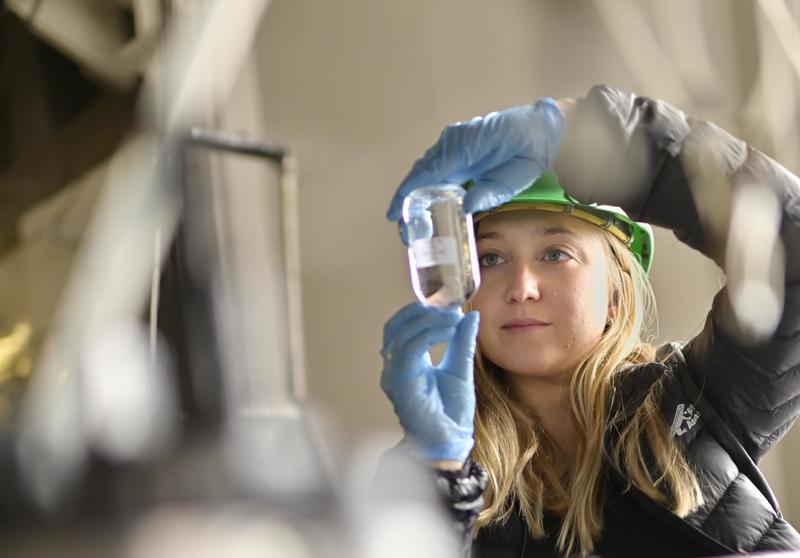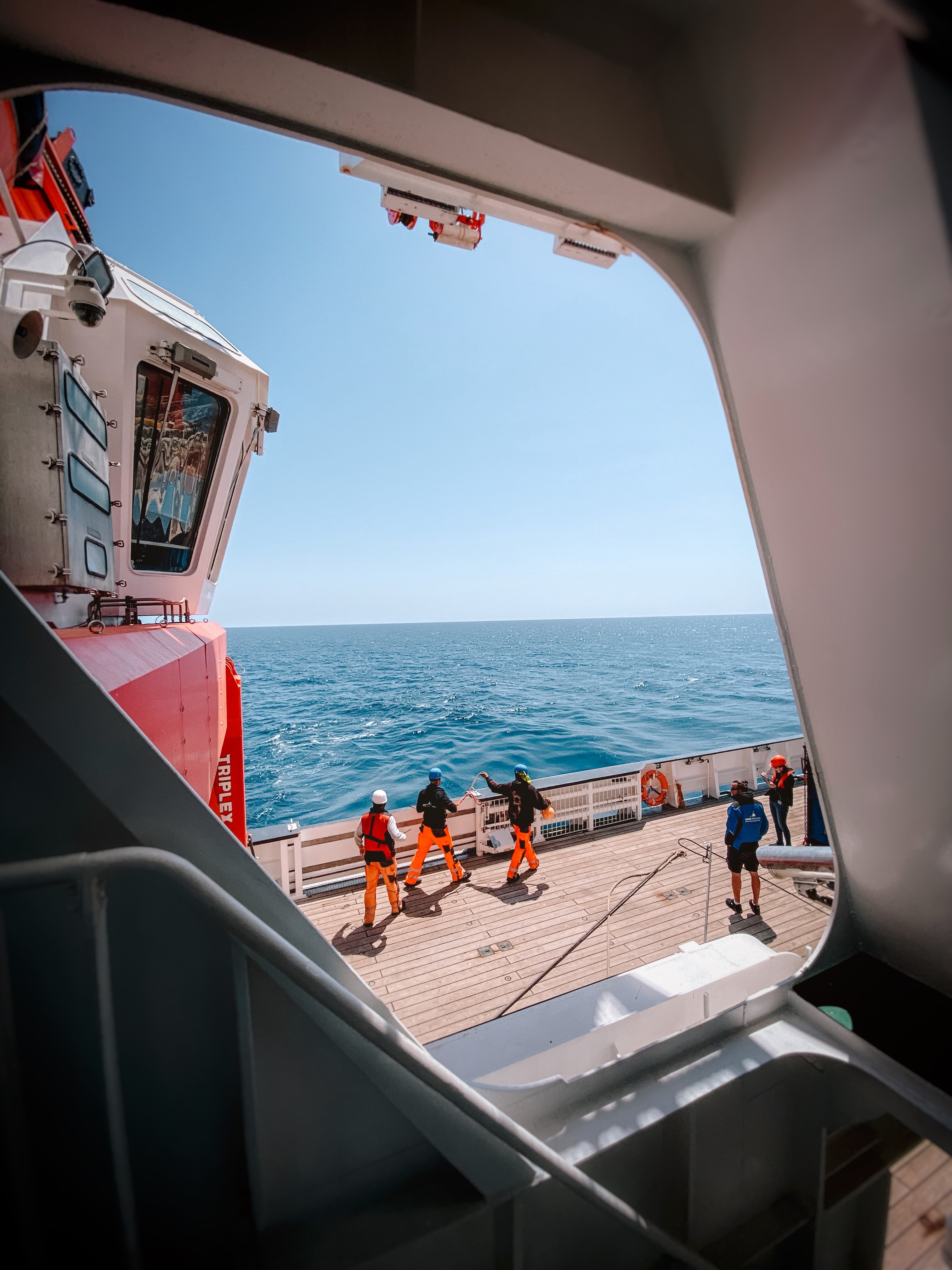Managing the impact of the Benguela losing breath
26 January 2023 | Story Nadia Krige. Photo Sina Wallschuss Read time 7 min.
Across the world’s oceans, there are places especially abundant in nutrients and life. They cover around 1% of the ocean but produce a disproportionate amount of fish: 20% of global marine fish catches. The southern Benguela Upwelling System is one such place. But it tends to unpredictable severe low-oxygen conditions, which are life-threatening to sea creatures and livelihood-threatening to local people. Researchers at UCT and their collaborators are figuring out what’s causing these conditions and how to manage them.
Located off the southwest coast of Africa, the southern Benguela Upwelling System is one of the most fertile ocean regions globally and of massive socioeconomic importance to South Africa, Namibia and Angola.
“The number of people reliant on the Benguela is very large,” explains Fawcett. “The World Bank estimates that about 10 million people depend on the Benguela ecosystem, which stretches from Cape Point to the border of Namibia and Angola.”
The region is also crucial to the livelihoods of subsistence fishers, of which a large percentage are classified as ‘poor’ by the World Bank.
The system is, however, prone to seemingly random low-oxygen conditions, called hypoxia, caused by large harmful algal blooms – like red tide and brown tide – that happen in response to high nutrient availability.
About 10 million people depend on the Benguela ecosystem.
Sometimes, these blooms get so large that when they sink to the shelf, where they are decomposed by bacteria, it leads to oxygen depletion in the water or hypoxia. These events are often coupled with mass fish kills and lobster walkouts.
Given the socioeconomic importance of the sea in this region, the impact of these hypoxia events is widespread and holds the potential for catastrophe.
Nutrient-rich waters: gift or curse?
Upwelling systems are driven by wind that moves warm surface water away from the coast. These warm waters, usually low in nutrients, are replaced by cold, nutrient-rich waters that upwell from below.
Under these circumstances, the nutrients carried by the upwelled waters are a gift, driving productivity up through the food web.
Until recently, researchers didn’t have the full picture of what caused the occasional, unpredictable low-oxygen conditions in the southern Benguela Upwelling System. Fawcett and her group have, however, managed to pinpoint one of the leading causes: an accumulation of nutrients – the very thing that also makes the region so fertile.
This finding resulted from a partnership with the South African national Department of Forestry, Fisheries and the Environment (DFFE), which enabled Fawcett’s group to take regular measurements of nutrient concentrations in the region as part of the department’s quarterly research cruises.

enabling them to take regular measurements of nutrient concentrations in the southern Benguela Upwelling System.
After sifting through thousands of measurements, they found that, instead of being forced offshore at regular intervals by upwellings of cold water, huge concentrations of nutrients were being trapped close to the coast by powerful water currents (called fronts) moving from south to north.
“These fronts trap plankton material inshore, and it sinks to the bottom and gets decomposed by bacteria there. When bacteria break down organic material, they remove oxygen and produce nutrients that accumulate on the shelf,” explains Fawcett.
“If you didn’t have these fronts, a lot of the organic material would be advected offshore as more water upwells to replace it. But that doesn’t happen.”
When the next upwelling occurs, these nutrients are scraped from the shelf and returned to the surface. This creates a mechanism of what can be described as nutrient recycling.
Fawcett says that while this mechanism has resulted in a particularly fertile ocean region, every time organic material is decomposed to create those nutrients, oxygen is stripped out of the water.
Predicting “random” events
While seasonal hypoxia events due to bacterial growth aren’t unusual in upwelling systems, the southern Benguela Upwelling System is prone to non-seasonal, episodic low-oxygen conditions that are difficult to predict. Of course, this makes it a tricky ecosystem to manage.
“We are pretty sure that if we can better understand the physics that lead to the organic material being trapped, we can better predict when the seemingly random low-oxygen events are likely to happen,” says Fawcett. “In order to do this, we’ve been developing a model that can serve as an ecosystem management tool.”
Fawcett and her team are developing the model using a combination of their observational data and historical data from the DFFE’s archives. They are also collaborating with the South African Environmental Observation Network modelling team, led by Dr Jennifer Veitch, which has been tasked with developing physical models for South Africa’s waters (its exclusive economic zone).
“The more data we have, the more robust the model will be,” says Fawcett.

Although not much can be done to prevent these events, the model could help ecosystem managers and those reliant on the southern Benguela for income and sustenance to better prepare when they happen.
Fawcett uses lobster walkouts on the West Coast as an example. Normally, when this happens, the DFFE will try to move lobsters further up the coast where the water has more oxygen. Forewarning could help them do this more efficiently.
Equipped for the task
While the project’s inception may have been opportunistic, sprouting from Fawcett’s working relationship with the DFFE, the state-of-the-art Marine Biogeochemistry Laboratory (UCT-MBL) represents years of planning and is perfectly equipped for the task.
Partly funded by the National Research Foundation, the lab was officially opened earlier this year and is affiliated with the Biogeochemistry Research Infrastructure Platform group structure established in 2020 with collaborators at other South African universities.
“Access to the UCT-MBL allowed me to analyse over 2 000 nutrient samples during my master’s,” says Raquel Flynn, who completed her MSc under Fawcett’s supervision. “The immense dataset is ultimately what led us to identify the fronts as retaining the organic material on the southern Benguela shelf and driving local oxygen depletions.”
“It has been hugely gratifying to show how these tools – that can seem so esoteric – might actually end up yielding a tool for ecosystem management with huge socioeconomic implications,” Fawcett concludes.
 This work is licensed under a Creative Commons Attribution-NoDerivatives 4.0 International License.
This work is licensed under a Creative Commons Attribution-NoDerivatives 4.0 International License.
Please view the republishing articles page for more information.









